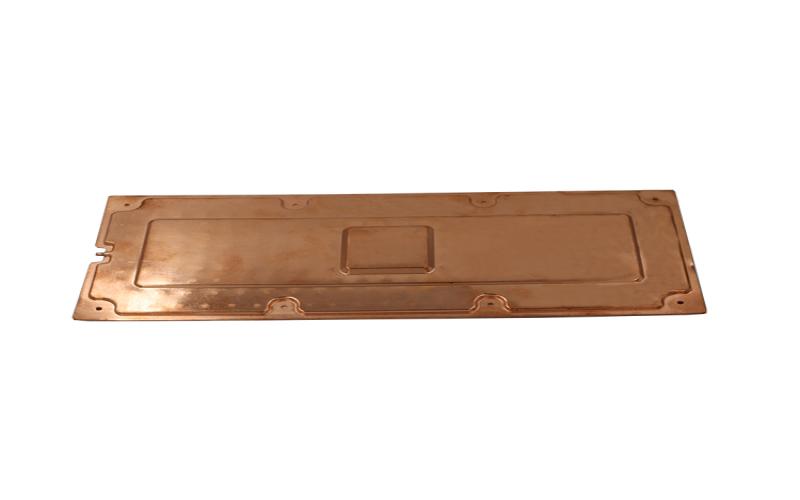The Wonders of Vapor Cooling: Unveiling the Secrets Behind Liquid Cooling Systems
When it comes to keeping electronic devices cool, traditional cooling methods often fall short. However, vapor cooling, also known as liquid cooling, has emerged as a highly effective solution. By utilizing the thermodynamic properties of vaporization, this innovative cooling technique can dissipate heat more efficiently than traditional air cooling methods. In this article, we will delve into the intricacies of vapor cooling, exploring its mechanics and benefits.
Understanding the Basics: What is Vapor Cooling?
Vapor cooling is a cooling technique that utilizes the process of vaporization to dissipate heat from electronic devices. In this method, a liquid coolant is used to absorb heat from the components, which then undergoes a phase change into vapor. The vapor is then transported away from the heat source, where it condenses back into a liquid and releases the absorbed heat.
Vapor cooling systems consist of several key components, including a heat source, a coolant, a pump, a heat exchanger, and a condenser. These components work together to ensure efficient heat transfer and cooling.
The Role of the Coolant: A Key Player in Vapor Cooling
The coolant used in vapor cooling systems plays a crucial role in the overall effectiveness of the cooling process. Common coolants include water, ethylene glycol, and various refrigerants. The choice of coolant depends on factors such as its thermal conductivity, boiling point, and compatibility with the system.
When the coolant comes into contact with the heat source, it absorbs the heat and undergoes a phase change from liquid to vapor. This phase change allows the coolant to carry away a significant amount of heat energy, making it an efficient cooling medium.
From Heat Source to Vaporization: The Pump's Function
A pump is an integral component of a vapor cooling system, responsible for circulating the coolant and ensuring a continuous flow. The pump creates the necessary pressure to move the coolant from the heat source to the heat exchanger, where the heat transfer process occurs.
By maintaining a consistent flow rate, the pump ensures that the coolant efficiently absorbs heat from the components. This steady circulation prevents hotspots and promotes uniform cooling throughout the system.
Efficient Heat Transfer: The Role of the Heat Exchanger
The heat exchanger is a crucial component in vapor cooling systems, facilitating the transfer of heat from the coolant to the surrounding environment. It consists of a network of pipes or fins that increase the surface area available for heat dissipation.
As the coolant flows through the heat exchanger, it releases heat to the surrounding air or another medium, such as water. This transfer of heat allows the coolant to return to its liquid state, ready to absorb more heat from the components.
Condensation and Heat Disposal: The Vital Role of the Condenser
After the coolant has released its heat in the heat exchanger, it enters the condenser. The condenser is responsible for removing the heat from the coolant and facilitating its transition back to a liquid state.
Typically, the condenser consists of coils or plates that maximize the surface area available for heat dissipation. As the coolant comes into contact with these surfaces, it releases heat to the surrounding environment, causing it to condense back into a liquid. The condensed coolant is then returned to the heat source, ready to begin the cooling process once again.
The Advantages of Vapor Cooling Systems
Vapor cooling systems offer several advantages over traditional air cooling methods. Firstly, they provide superior heat dissipation, allowing electronic devices to operate at lower temperatures. This can significantly improve their performance and lifespan.
Furthermore, vapor cooling systems are often quieter than air cooling systems, as they eliminate the need for high-speed fans. This makes them an ideal choice for applications where noise reduction is essential, such as in recording studios or home theater setups.
Additionally, vapor cooling systems can be more compact and lightweight compared to bulky air cooling setups. This makes them particularly suitable for small form factor devices, such as gaming consoles or compact desktop computers.
The Future of Vapor Cooling: Innovations and Applications
The field of vapor cooling is constantly evolving, with researchers and engineers exploring new techniques and materials to enhance cooling efficiency further. One such area of innovation is the use of advanced nanomaterials, such as graphene, which possess excellent thermal conductivity properties.
Moreover, vapor cooling systems are finding applications beyond traditional computing devices. They are being utilized in high-performance computing clusters, data centers, electric vehicle battery cooling, and even in the aerospace industry.
In Conclusion
Vapor cooling, with its efficient heat dissipation and numerous advantages, has become a go-to cooling solution for many electronic devices. By harnessing the power of vaporization, these systems ensure optimal performance and longevity for a wide range of applications. As technology continues to advance, we can expect further innovations in the field of vapor cooling, paving the way for even more efficient and effective cooling solutions.

